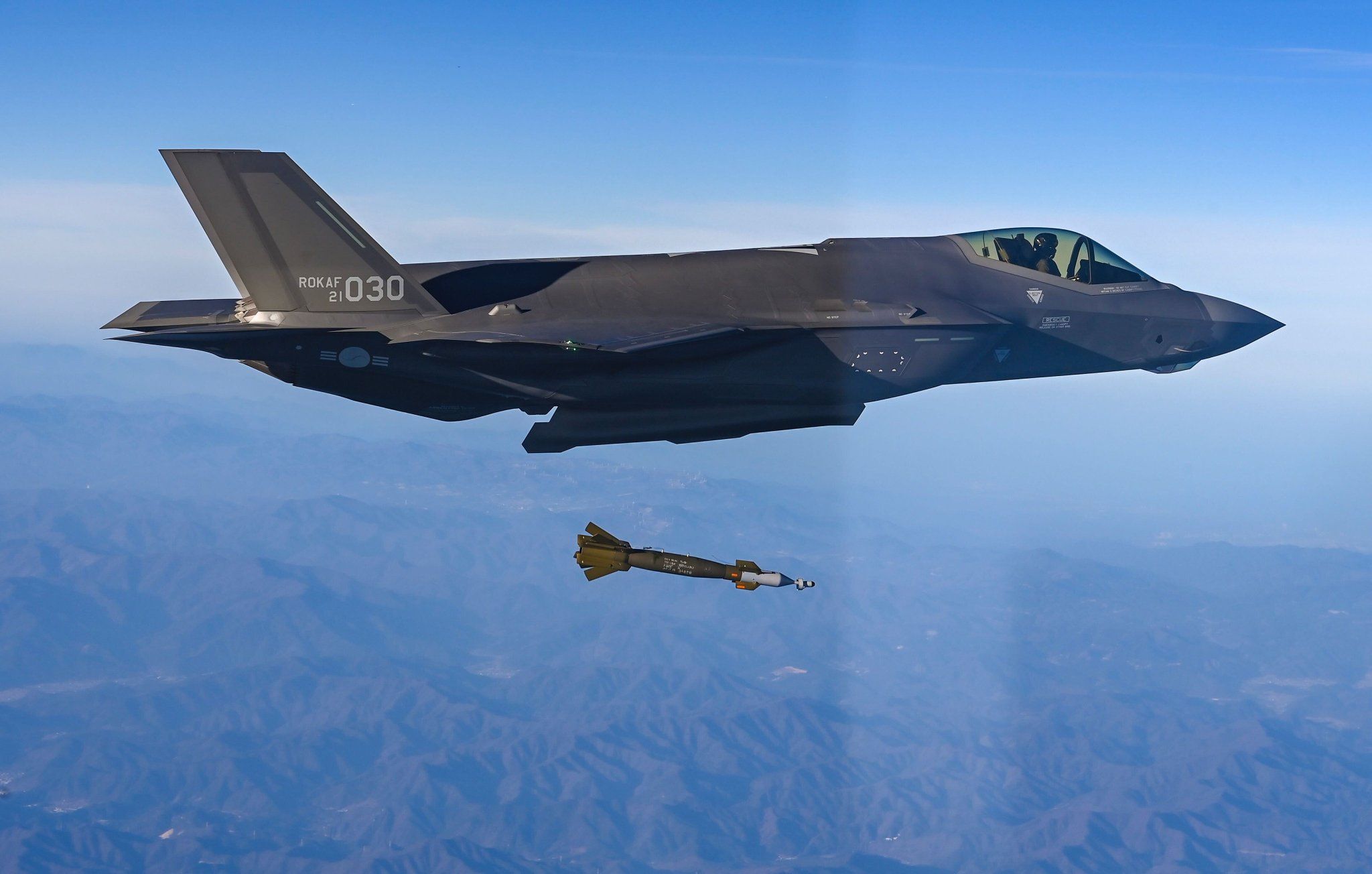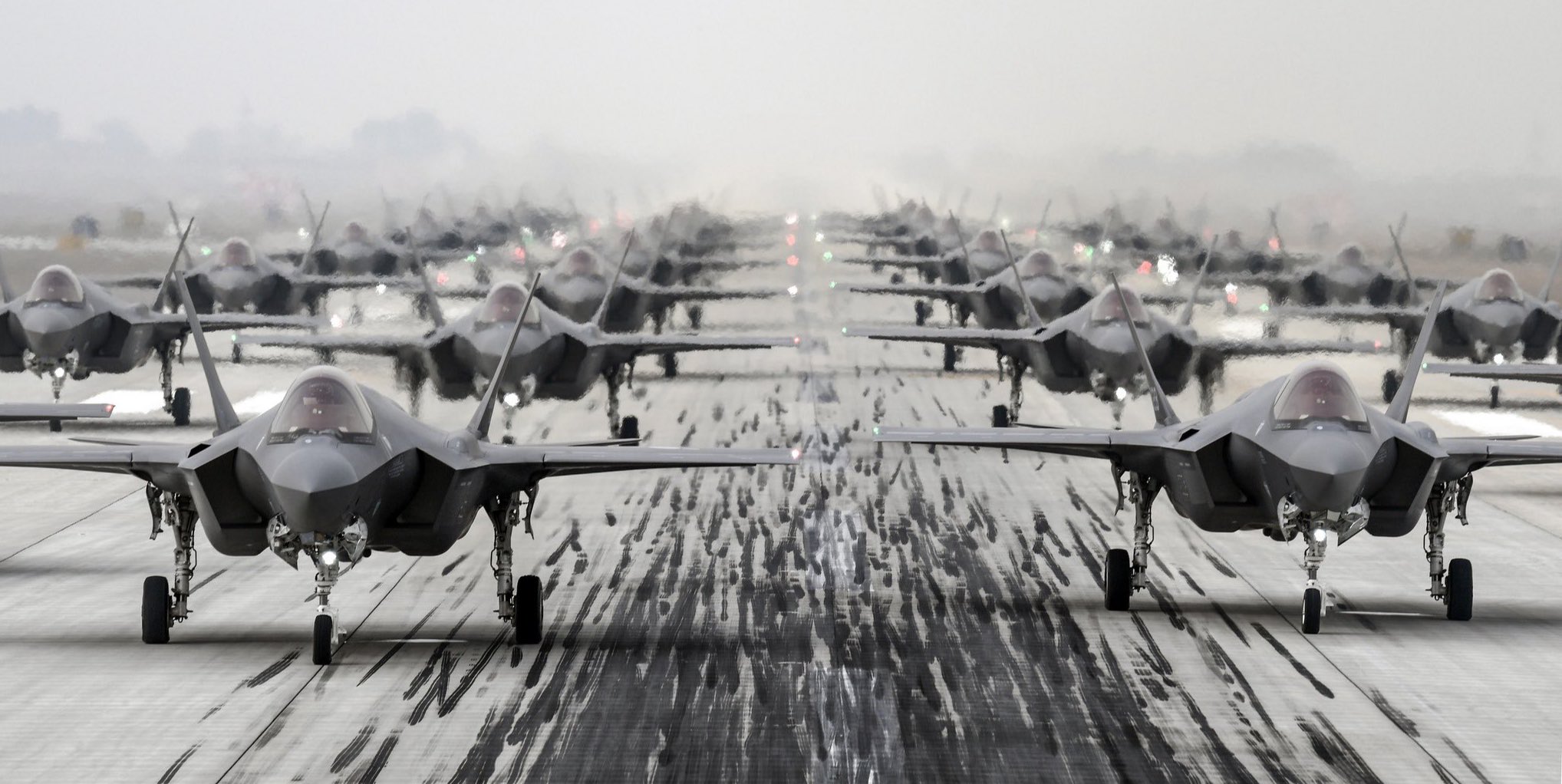After suffering a bird hit that resulted in massive damage to the aircraft last year, South Korea’s most advanced fighter jet, the fifth-generation F-35A Lightning II, could be headed to the boneyard.
The $100 million F-35A could be junked by the Republic of Korea (ROK) Air Force due to exorbitant costs of repair, The Korea Times reported. The total cost of repairing the aircraft is estimated to be over 100 billion won ($76 million) in repairs, which is close to its initial cost of $100 million.
The assessment followed discussions between the Republic of Korea Air Force and Lockheed Martin, the American defense industry giant that created the stealth fighter. The Korean military would likely pay for the repairs because the accident in January 2022 was “bad luck” and not the result of a mechanical error on the company’s part.
The South Korean military said that one of the options available to their discretion was to write off the aircraft, thereby junking it. However, a decision is yet to be taken on the matter.
The F-35A is the most commonly operated variant of the US F-35 stealth aircraft.
According to a ROK Air Force official, the service has been talking with manufacturer Lockheed Martin about what to do with the fighter. The official stated that a decision on whether to fix or toss it would be made after weighing the economic and safety implications.
In January 2022, a South Korean F-35 pilot was forced to make a “belly landing” after being hit by a bird during a training session that caused a glitch in its avionics system. At the time, the ROKAF announced that the jet had collided with a 10-kilogram eagle.
The eagle reportedly struck the aircraft’s left air intake, broke through a bulkhead into the weapons room, damaged a hydraulic duct and power supply cables, and interfered with the landing gear’s operation. The jet crash-landed on its belly while the pilot escaped unhurt.
According to officials, the incident happened when the fighter flew at a low altitude to enter a firing range for an air-to-ground firing mission after taking off from an air base in Cheongju, 140 kilometers south of Seoul.
A joint inquiry team made up of 12 South Korean experts and 14 Americans from the government, the Air Force, and the fighter’s manufacturer was quickly established by South Korea and the United States following the event.

South Korean F-35 Lightning II
The Korean Air Force finished deploying 40 F-35A radar-evading fighters in late January.
The COVID-19 pandemic caused a significant delay in deploying the 40 jets originally scheduled for the end of last year. The warplane serves as the focal point of the nation’s air power and is set to increase operational capabilities and fortify its readiness posture against prospective adversary forces.
South Korea announced earlier this year that it plans to purchase 20 additional F-35A Lightning II fighters. According to a news release by the Defense Acquisition Program Administration, Seoul will spend over $2.9 billion on the purchase, bringing its total number of aircraft to roughly 60 by 2028.
The purchase, as per the announcement, reinforces South Korea’s integrated “three-axis” defense strategy. The phrase, which was developed by the Ministry of National Defense, is used to describe air and missile defense systems, retaliatory strikes against Pyongyang, as well as preemptive actions against a present danger from North Korea.

South Korea’s F-35s regularly participate in aerial drills with the United States, practicing a response to potential threats from the North with airpower demonstrations. For instance, a pair of USAF B-52s flew alongside American F-16s and South Korean F-35s over the Republic of Korea for a training exercise last month.
Not just that, in November 2022, the two countries held joint air exercises called ‘Vigilant Storm,’ which included 1,600 sorties by aircraft from the two countries, including by the F-35A of the ROK Air Force.
However, despite its active participation in joint drills, the aircraft has suffered several setbacks in the past. The F-35A fighter jets of the South Korean Air Force were notified to be operationally unready on 234 occasions over 18 months ending in June 2022 due to malfunctions.
There were 172 occasions when the fighters were grounded and 62 occasions when they could fly but couldn’t complete specific tasks. Grounded fifth-generation fighters could carry out missions for only 12 days on average in 2021 and 11 days in the first half of 2022.
- Contact the author at sakshi.tiwari9555(at)gmail.com
- Follow EurAsian Times on Google News




